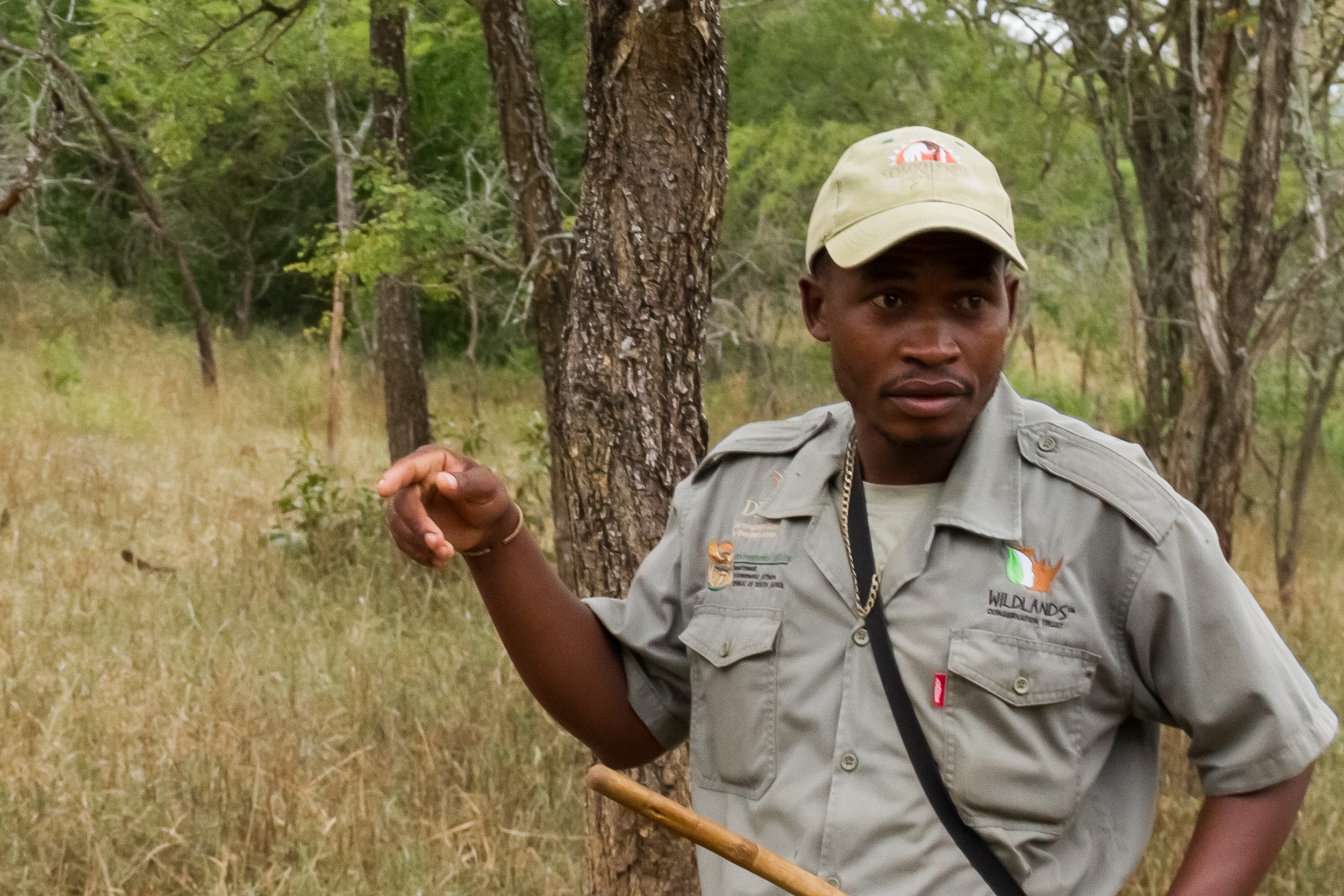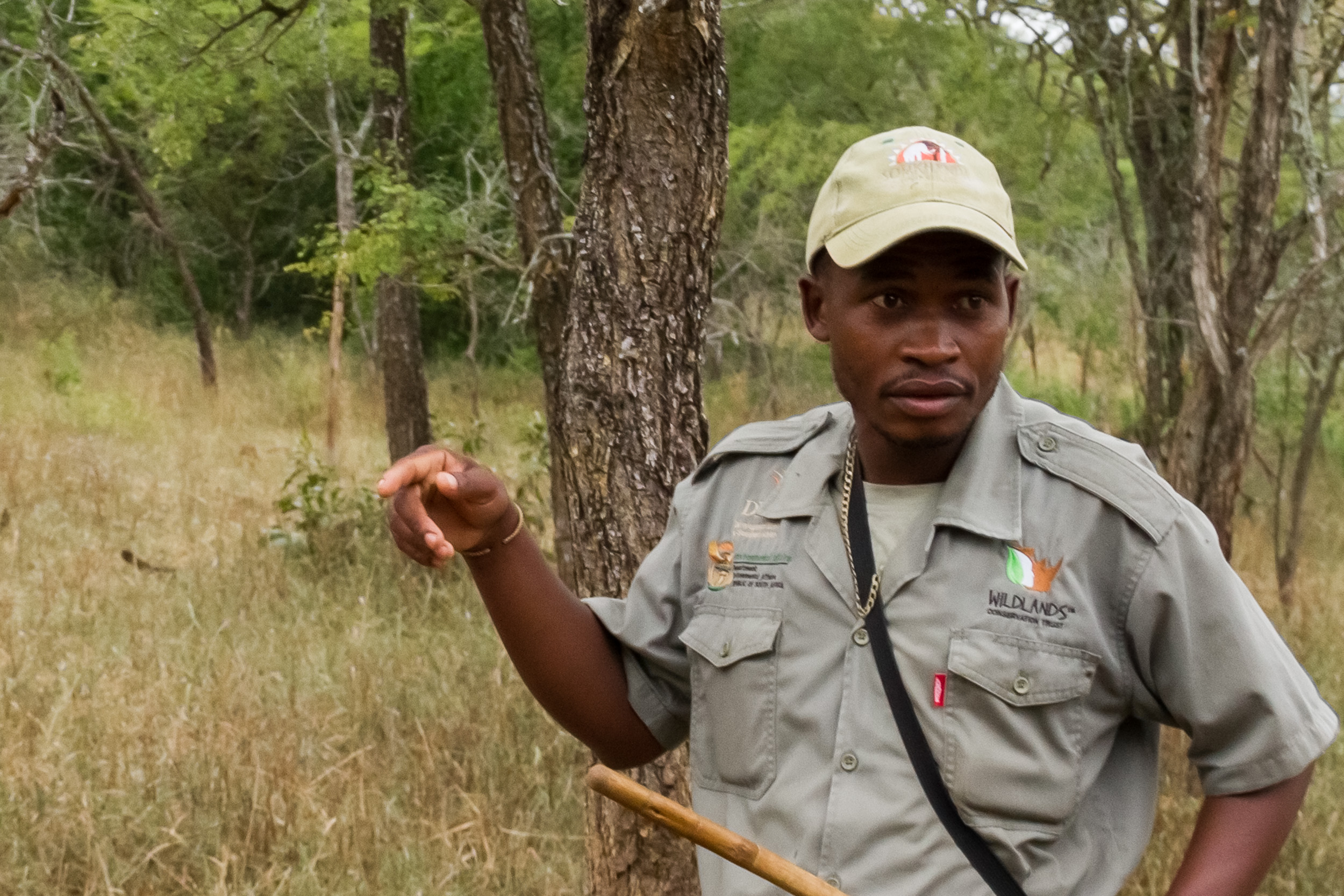
17 Apr Community project loses its first rhino
Environment Minister Edna Molewa launched the South African Green Economy Modelling report last year at the Somkhanda game reserve, setting it as an example of how rural communities can benefit from investing in wildlife economies.
Somkhanda, based in northern KwaZulu-Natal, is part of the Farming the Wild initiative supported by the Green Fund. The fund provides catalytic financing to facilitate investment in greening projects such as Somkhanda.
The reserve was created by the Gumbi community after they successfully claimed 32 000ha of land near uPhongola in 2005. The community chose to place 12 000ha of their land under conservation, with the remainder set aside for human settlement and communal activities.
Named after the first ancestor of the Gumbi people, Somkhanda has become a flagship project for conservation-based community development. It is directly responsible for employing 75 people, 15 of them in temporary positions, all recruited from the local community.
One of the community projects at the reserve has been the reintroduction and protection of a small population of rhinos. But on April 17 it announced that an adult male white rhino had been found poached with both its horns removed.
Nkosinathi Mbhele is the reserve manager who brokered a successful deal with the neighbouring community and built the relations needed to ensure mutual benefit for the reserve and the community.
“We have been trying by all means to combat rhino poaching on the reserve,” said Mbhele, “but unfortunately it has not been enough. We will keep pushing to make sure that this incident is just a once off.”
Locals are employed to do contract work such as maintaining game fences, rather than using external contractors. Mbhele explained that the teams outperform external contractors, because they know they are beneficiaries of the reserve.
Rare and endangered species have been reintroduced to the reserve, and the bush at Somkhanda is teeming with wildlife. It also sports diverse birdlife.
Trainee security manager Bhekani Mavumbele is a man of few words, at home among his game rangers. He plans the daily patrols and personally lead his teams in the field.
His team is well trained in anti-poaching tactics and in the field they work in silence, communicating via whistles, hand signals and occasional whispers. They do not want to scare the wildlife or prematurely warn poachers of their presence.
Local residents respect the rangers. Since they were not imported from outside, they act as ambassadors for the reserve when they mingle with friends at home. This reinforces community commitment to the project, Mavumbele said.
Locals are also employed to take care of tourists at a well-equipped lodge on the reserve and on mobile camps, a business unit dedicated to setting up tented accommodation wherever tourists need them. This unit generates additional income outside Somkhanda by catering for off-road expeditions as far away as Mozambique.
“There is significant opportunity for communities to benefit from investing in wildlife economies, and they certainly have access to some key resources to do so,” said Chris Galliers, chairperson of the Game Rangers Association of South Africa.
“It’s absolutely critical for the future of conservation efforts in Africa that we work beyond the boundaries of protected areas. That means working more closely with local communities.”
In 2013 the Green Fund allocated R14-million to supporting the Somkhanda game reserve. The Green Fund is an R800-million pool of capital reserved for high-impact, scalable initiatives that can demonstrate sustainable economic activity and tangible social and environmental outcomes.
The funding enabled Somkhanda to refurbish ageing infrastructure and to spend on capital projects like fencing, water distribution, tourism lodges and increased biodiversity, including the acquisition of buffalos. Management at Somkhanda is frugal, and constantly considers the viability of replacing versus repairing equipment.
The Gumbi community formed strategic partnerships, including one with the Wildlands Conservation Trust, a non-profit organisation that focuses on community ecosystems-based adaptation. Wildlands is supporting the community’s conservation efforts by applying climate change adaptation and mitigation strategies.
Wildlands appointed regional manager Dave Gilroy to oversee the Somkhanda project. He explained that the local management and staff operate the facility on a day-today basis, and his role as facilitator and mentor is to empower the team to move towards strategic management and improved administration.
Nathi Gumbi, a son of the royal Gumbi family, said many communities do not realise the potential of forming partnerships after a successful land claim. “People think when they get their land they must fire consultants, but their own people sometimes have limited skills. That’s why we see land damaged and going backwards.”


